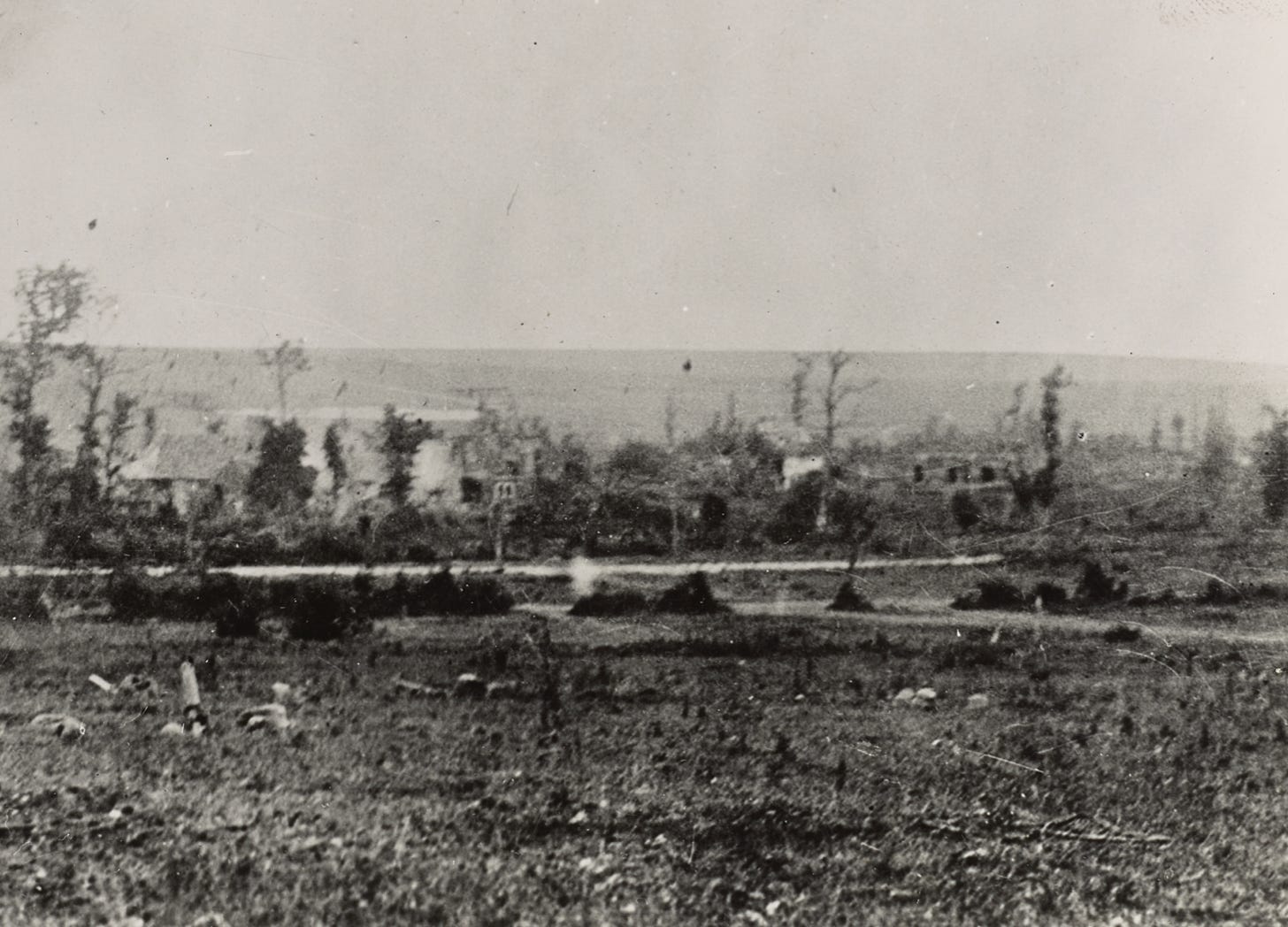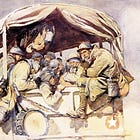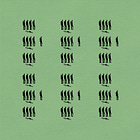Attack upon a Machine Gun Platoon
An engagement from the spring of 1918
On 10 July 1918, the General Headquarters of the American Expeditionary Forces in France published a pamphlet that contained descriptions, told from the point of view of British participants, of recent engagements. The following is a verbatim copy of one of these reports.1
A 2nd Lieutenant of the [British] Machine Gun Corps, who was in the very severe fighting at __________, gave me the following account of the action of a nest of four machine guns, fully manned, amply supplied with ammunition, with good cover (such as trenches and machine gun emplacements) and well-sited, under his command.2
Every indication pointed to the development of an attack at this point (the point occupied by this nest) and he was fully aware of the responsibility of holding this post at all costs.
On the morning in question - a clear day and with good observation - he saw practically all of the development of an attack on the lines held by him, with detached posts of machine guns and infantry on both sides of him.
He states that he saw first to his front, about 600 yards away, one German with a light machine gun carried by a sling over his shoulder. This German ran forward about 30 or 40 yards, crouching and using the cover of hedges, bushes and tall grass and dropped on the ground, disappearing from view.
He [the British lieutenant] directed one of his guns on the spot occupied by the German and ordered this gun to be ready to open fire. Very shortly afterwards, the same thing happened about 50 yards to the left, and again between 50 and 75 yards in the extended line, still other [men armed with] light machine guns ran forward and dropped in the grass, until the particular line of approach which he had been directed to defend was covered by these individual soldiers. (He saw nothing of what went on further to the right and left of his particular field of fire.)
Then, from the rear, other individual soldiers armed with rifles, and, apparently, heavily loaded with ammunition, ran forward one at a time and dropped in the grass close to one of these advanced [light] machine guns. This kept up until about three or four men had joined each [light] machine gun, each using all the cover available and moving very rapidly while in view.
Some hundred yards away, and just over of the crest of a light slope, he saw little groups of infantry in columns approaching. He ordered his machine guns to open on these groups with short bursts of fire. As soon as his fire opened the infantry disappeared. Then the [German] light machine guns began ranging with single shots, or groups of three shots per gun, until they were, apparently, satisfied with the range.
There was a pause then for one-half to three-quarters of an hour. He thinks he saw German soldiers crawling or dodging cautiously back from one or two of these advanced groups of light machine guns. He felt satisfied that an attack was coming in force, and having been impressed with the rapidity of the German attack, was waiting for a good target.
At the end of this pause, the light machine gunners began the same method of advance - running forward, taking cover and disappearing in the grass or behind any shelter that appeared, and they were reinforced as previously. The groups of infantry again appeared, and about the same time he opened fire he was covered by very accurate and heavy fire of what seemed to him to be heavy machine guns further to the rear than the advanced infantry groups and well towards the flanks. This fire caused him immediate losses and the men were obliged to take cover.
The infantry and advanced machine gunners continued their progress until he became alarmed and opened fire again. The advanced machine gunners almost immediately opened fire and the heavy machine guns also fired, and his position was at the same time subjected to an accurate fire of minnenwerfers - of a light type.
He soon had two [of his own machine] guns knocked out, and he suffered very heavy losses. The infantry continued their advance slowly and cautiously, using all available cover and with wide intervals between the groups, and other lines of groups of greater numbers followed some hundreds of yards in the rear.
He sent back runners to where he thought the Company Headquarters were but it could not be found. He sent runners for information to where he thought the nearest artillery wars, but never heard from either of these runners and his messages were not received.
He ordered the remaining two guns to open fire until practically all of his personnel were wounded and another gun put out of commission. He did not remember seeing any casualties of consequence inflicted by his fire. Meanwhile, the [German] Lewis gunners had worked to the flanks and enfiladed his position entirely.3
He and the lightly wounded took out as many of the more seriously wounded as they could carry and went to the rear. This officer informed me that a few days later he was again in action and was defeated by the same tactics. He informed me that contrary to the information received the advance of the Germans in this filtration movement was exceedingly slow and very cautious. This was a very young officer in a serious action for the first time.
Source: General Headquarters, American Expeditionary Forces ‘Extract: Report of American Officer on Recent Fighting’ (10 July 1918), US National Archives (Archives II), Record Group 127 (Records of the US Marine Corps), Records Relating to US Participation in the World Wars (1916-1945), Box 6 (27 May - 9 July 1918)
Acknowledgement: I would like to thank Michael Miller, late of the archives of the Marine Corps University, for giving me a copy of this document.
Source for Photo: US National Archives
For Further Reading:
To Subscribe, Support, or Share:
For the sake of readability, I have divided the report (which was originally typed as a single block of text) into paragraphs, improved the punctuation, and added explanatory words (which appear within brackets).
Unfortunately, the pamphlet provided neither the location of the engagement nor the name of the British unit involved. Thus, I have been unable to find additional information about this encounter.
While German soldiers of the First World War prized the Lewis gun, and made use of any such weapons they could get their hands on, the British lieutenant recounting this experience seems to have used the term ‘Lewis gun’ as a stand-in for ‘light machine gun’.







I am really impressed how the German Army executed this move with, apparently, only infantry units with supporting machine guns making maximum use of terrain and tactical movements. I think this underscores the need for:
1. Good flank protection, even for a four gun machine gun platoon and especially in an exposed position. Getting out flanked and enfiladed stinks!
2. Rapid and redundant means of communication with adjacent units and higher HQ. Relying only on runners clearly did not work and having field telephones and visual signals (flares, etc.) would have really helped (wireless communication would have been a real stretch in WW I). Primary, Alternate, Contingency and Emergency (PACE), is a great way to plan.
3. Combined arms might not always save the day, but will give you serious company when things get bad. The placement of this platoon in an apparently exposed and isolated position, without infantry and fire support, must have been part of an economy of force move or a serious dumb attack by someone. No surprise that the Germans spotted the vulnerability and capitalized on it.
4. Acting and not just reacting upon contact. Here it seems the 2LT in charge let the Germans set the pace of the whole engagement.